Very Important Design Patterns for Designing Your Own AgenticAI with MIA

Table of Contents
In the ever-evolving field of Artificial Intelligence, building autonomous systems that can think, act, and adapt without continuous human intervention is a key goal. These systems are often referred to as Agentic AI – intelligent systems designed to work autonomously toward specific goals. At Softqube Technologies, we believe in empowering businesses with next-gen AI-driven solutions through MIA – My Intelligent Assistant, a no-code platform that enables the seamless creation and deployment of Agentic AI.
In this blog, we’ll explore some of the essential design patterns used for developing Agentic AI systems and how Softqube, with MIA, leads the way in simplifying the implementation of these patterns. From memory-augmented agents to event-driven automation, let’s dive into the powerful architectures that make Agentic AI effective, scalable, and adaptable.
What is Agentic AI?
Agentic AI refers to systems where AI agents behave autonomously and are goal-oriented, much like “doers” that can plan, take action, and adapt based on their environment. These agents are capable of decision-making processes, problem-solving, and continuous learning, often through collaboration with other agents in an orchestrated workflow.
As a developer, creating Agentic AI systems involves selecting appropriate design patterns – reusable architectural templates that define the structure and behavior of these agents.
At Softqube Technologies, we’ve leveraged the power of these design patterns in building MIA – My Intelligent Assistant, a no-code platform designed to make Agentic AI accessible to everyone, regardless of their technical expertise.
Key Design Patterns in Agentic AI Development
1. ReAct Agent:
The ReAct (Reasoning and Acting) Agent is a dynamic framework that alternates between reasoning and acting. It combines the capabilities of Large Language Models (LLMs) for reasoning and decision-making with external tools to act on those decisions. This pattern involves a loop where the agent first reasons through a problem or situation, formulates a plan, and then takes action by utilizing tools like Google Search, email, or APIs. After taking action, it reflects on the result and continues the cycle.
How it works:
The ReAct agent uses LLMs to analyze the input and generate reasoning for the task at hand. Based on this reasoning, the agent may then activate specific tools (e.g., perform a web search, send an email) to fulfill the task. It continuously iterates through reasoning and action to improve its outcomes.
Use cases:
ReAct is typically used in complex AI agent products, especially those involving multi-step tasks, where both reasoning and action need to be dynamically adjusted. Examples include virtual assistants, customer service bots, and decision-support systems.
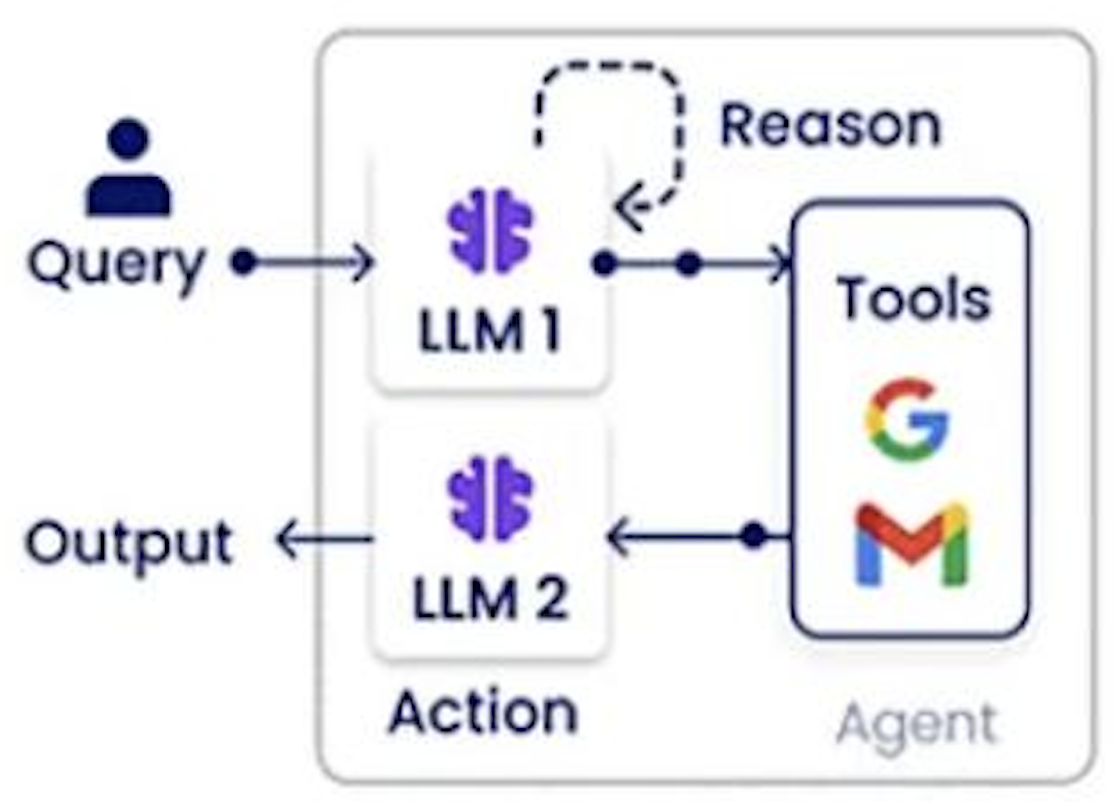
MIA uses the ReAct framework by allowing users to create agents that can alternate between reasoning tasks (such as customer query interpretation) and acting (like triggering an email response or performing a search). For example, an AI agent built using MIA might receive a request for information, reason through the available data, then act by pulling relevant resources or sending updates to customers.
Benefits:
This pattern enhances the agent’s flexibility and adaptability, allowing it to continuously refine its reasoning and actions. It is ideal for tasks requiring continual interaction with external data and the ability to adjust in real-time.
2. CodeAct Agent:

The CodeAct Agent framework by Manus AI focuses on enabling agents to autonomously execute Python code rather than relying on simpler data structures like JSON or basic commands. This makes it possible for the agent to perform more sophisticated and computationally intensive tasks that require code execution, such as data manipulation, machine learning model inference, or API interactions that go beyond basic queries.
How it works:
In this pattern, agents use Python code execution as a tool to solve problems. Instead of just pulling static data or relying on predefined rules, the CodeAct agent writes and runs Python code dynamically based on the task’s needs. It can work with libraries for data processing, machine learning, or system automation, significantly improving efficiency and capability.
Use cases:
This pattern is used in situations that demand high-level computational tasks, such as analytics, data science, and automation. It is commonly employed in systems like 8 Manus AI, which specialize in handling advanced technical tasks, providing robust tools for real-time code execution.
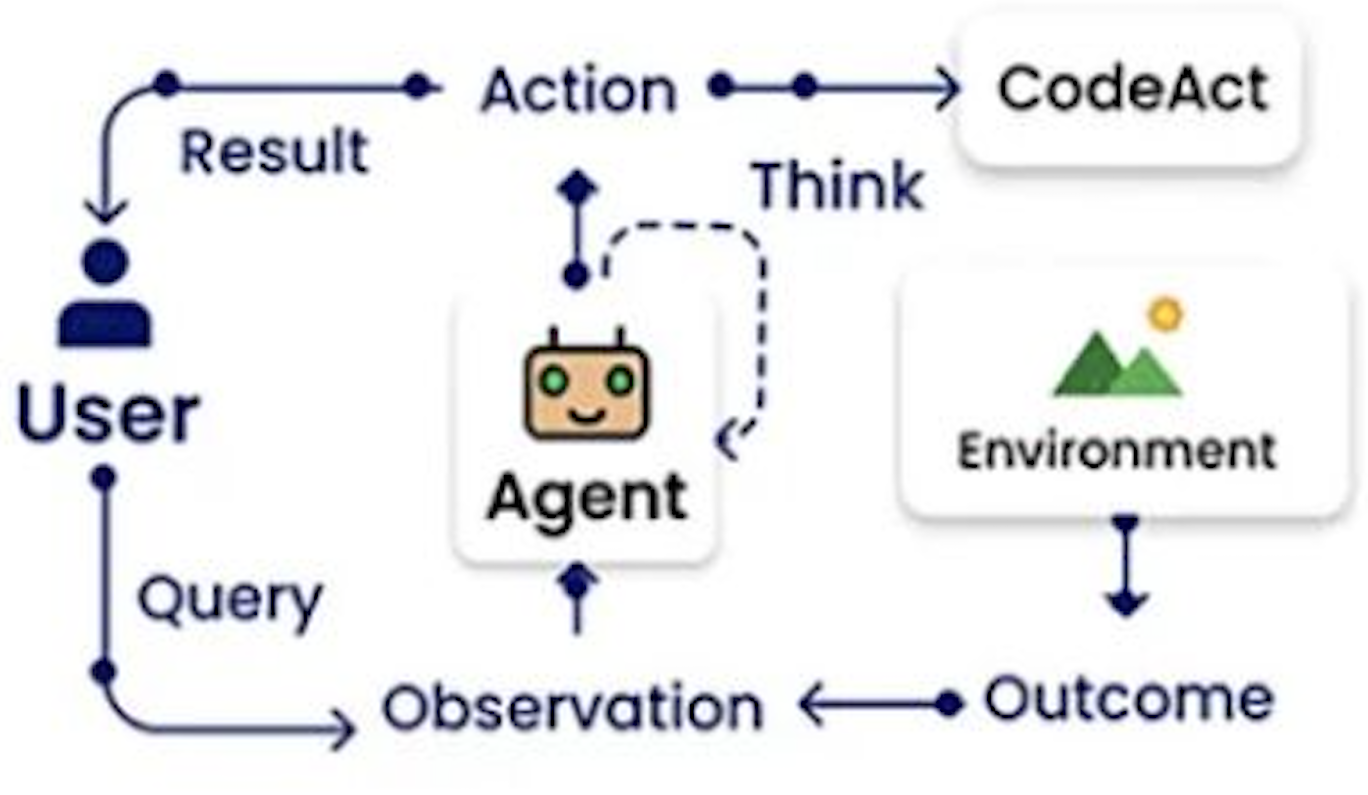
With MIA, developers can leverage the CodeAct pattern by creating custom AI agents that perform complex operations. For example, when an agent needs to process customer data or calculate specific metrics, MIA allows it to execute Python scripts for real-time calculations. The platform makes it easy to integrate Python-based functions without requiring users to write complex code themselves.
Benefits:
The ability to run Python code autonomously empowers the agent to handle more complex tasks, such as deep learning models, customized API interactions, and performing intricate computations. It allows the agent to be more autonomous and efficient in executing complex actions.
3. Modern Tool Use:
The Modern Tool Use design pattern is about integrating sophisticated external tools into the agent’s workflow with minimal code. These tools can include search engines like Kagi Search, cloud computing services like AWS, or even local tools within the agent’s environment. The agent can use these tools through a central processing framework (MCP) to achieve enhanced functionality without the need for deep coding or manual intervention.
How it works:
Agents utilizing this pattern can access and leverage third-party tools for tasks like data search, cloud resource management, or even running machine learning models. These tools are integrated into the agent’s workflow using simple calls and APIs, and the complexity is abstracted away from the user.
Use cases:
Used in applications like 7 CURSOR, where the agent needs to interact with several tools simultaneously or perform complex tasks like web scraping, cloud resource allocation, or machine learning tasks. It is also highly useful for personal assistants or enterprise automation solutions.
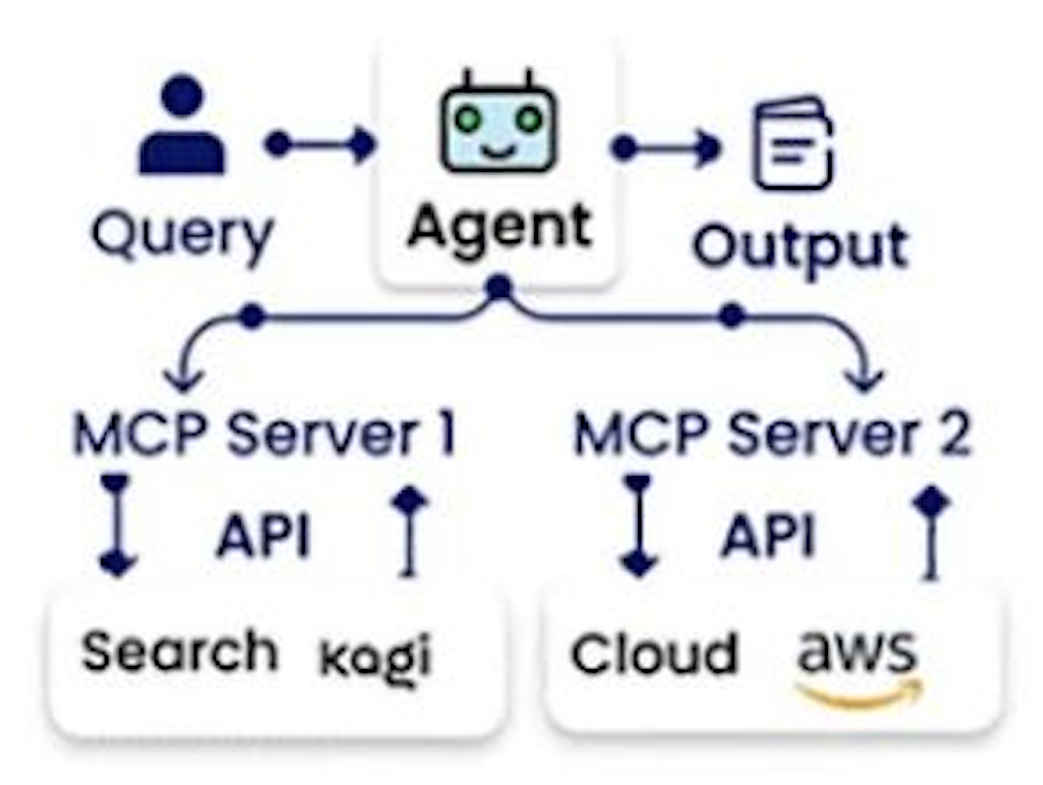
MIA simplifies the integration of modern tools into agent workflows. For example, if a user needs to pull real-time weather data or automate interactions with an ERP system, MIA can easily connect agents to external services like Kagi Search or cloud-based APIs. This seamless integration allows businesses to scale their operations without needing deep technical expertise in coding or integration.
Benefits:
Modern Tool Use simplifies the agent’s interaction with sophisticated tools, removing the need for complex coding. This makes it easier to scale the capabilities of the agent while maintaining minimal overhead.
4. Self-Reflection:
The Self-Reflection or Reflexion pattern involves an agent evaluating its own outputs and performance. After performing an action or generating a result, the agent analyzes the effectiveness of its output and iteratively improves by adjusting its reasoning or actions based on feedback.
How it works:
Once the agent completes a task, it looks back at the output and checks if it met the desired goal or expectation. If there are discrepancies, the agent uses feedback or critiques to identify the source of the error and refines its internal models or strategies. This feedback loop helps the agent continuously improve and adapt over time.
Use cases:
This pattern is employed in advanced AI systems like Open Serve AI, which require ongoing learning and improvement. It’s particularly beneficial for tasks involving content generation, problem-solving, or decision-making, where continuous improvement is necessary.
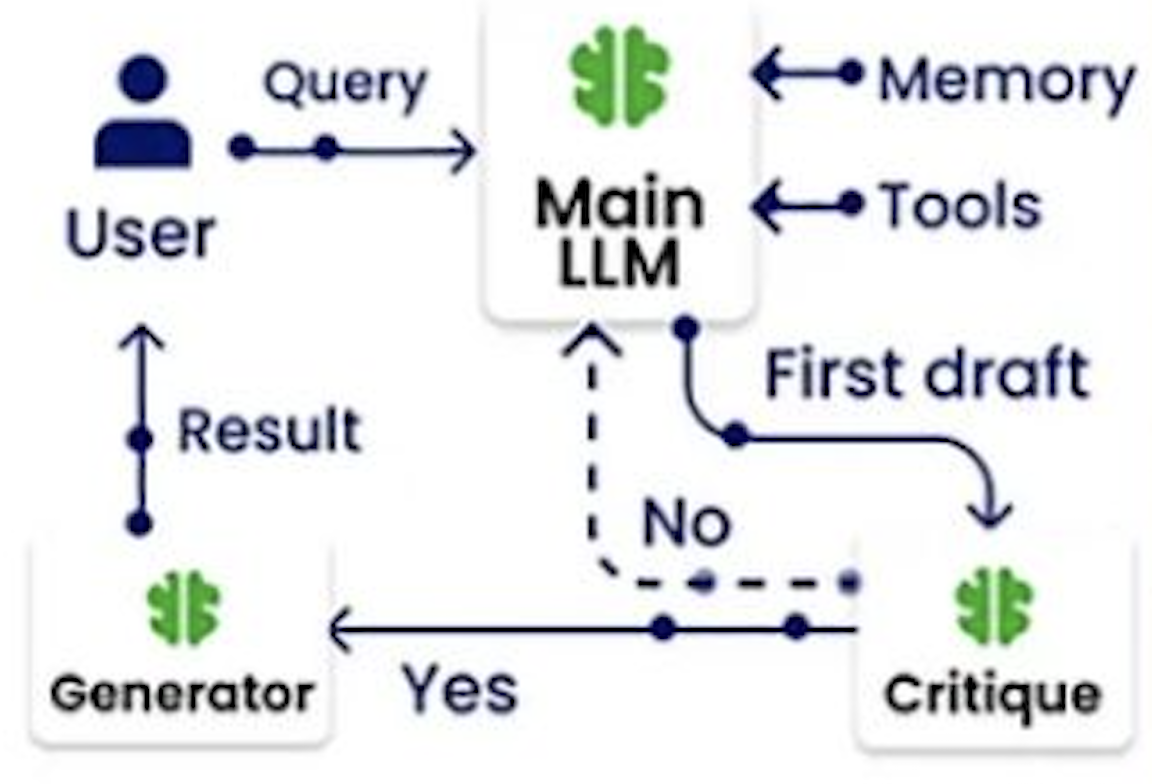
MIA incorporates self-reflection by allowing agents to review the effectiveness of their outputs. For instance, after processing a customer query or completing a task, the agent can assess the accuracy of its response or action. MIA provides the tools to set up a feedback loop, where agents can automatically adjust their behavior based on the results they observe (e.g., adjusting future responses based on customer satisfaction ratings).
Benefits:
Self-reflection allows for better error correction and continuous learning, making the agent more adaptable. It helps the agent self-correct over time, improving performance and reducing mistakes. It’s particularly important in complex, dynamic tasks where learning from feedback leads to better results.
5. Multi-Agent Workflow:
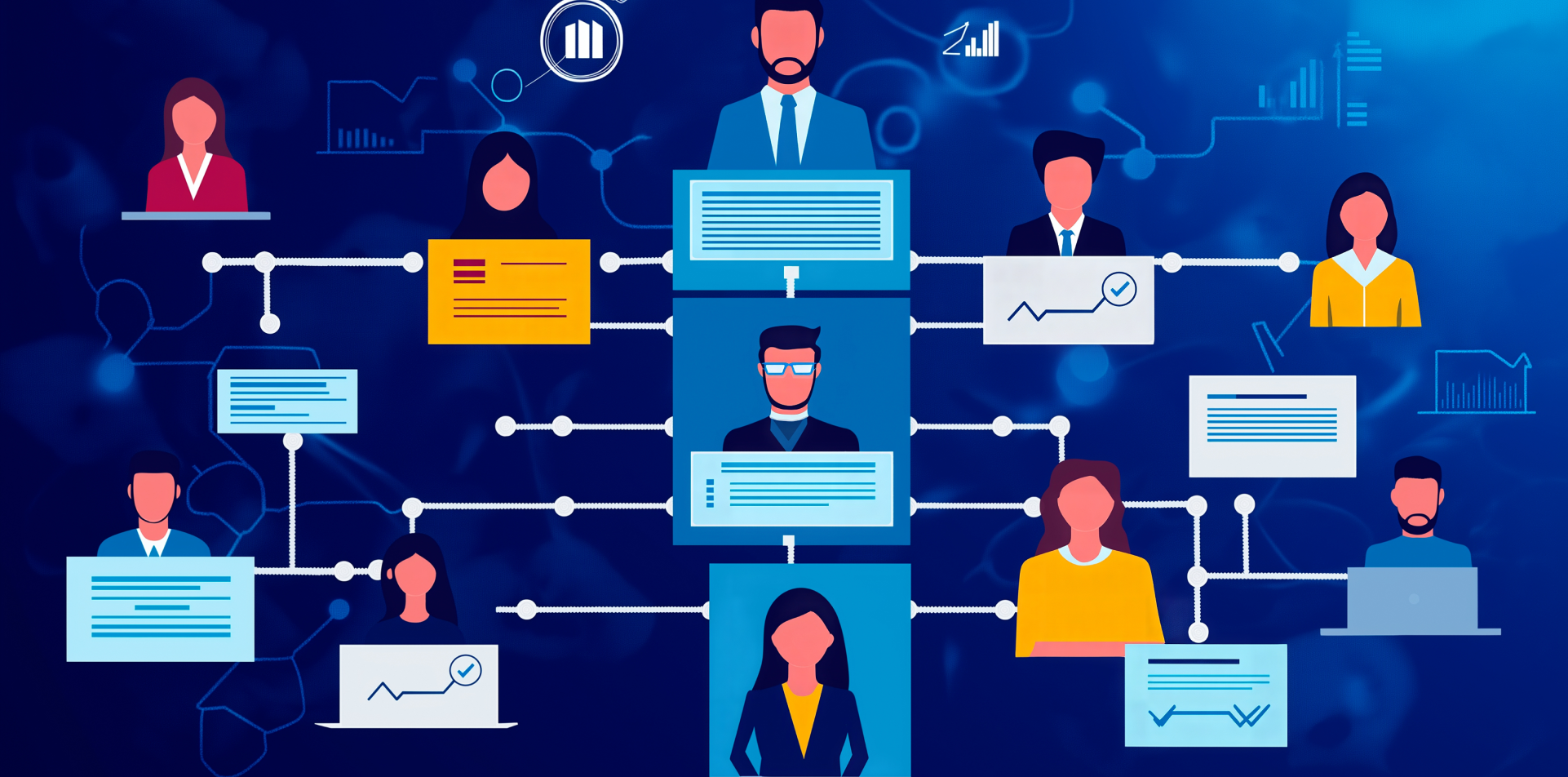
The Multi-Agent Workflow pattern focuses on collaboration between multiple specialized agents to achieve a task that requires diverse skill sets or perspectives. These agents work together within a coordinated framework to build a comprehensive output. Each agent may specialize in a specific task, and their collective efforts lead to more accurate and reliable outcomes.
How it works:
In a multi-agent system, different agents focus on different aspects of a problem. For example, one agent may gather data, another processes it, and a third makes decisions based on the processed information. The agents communicate and collaborate to build a final result, which is typically more precise than one single agent working alone.
Use cases:
This pattern is popular in advanced research and enterprise environments, like Gemini Deep Research, where specialized agents work together to conduct complex analyses, perform cross-functional tasks, or generate multi-faceted results. Multi-agent workflows can also be used in large-scale projects or situations that require diverse expertise.
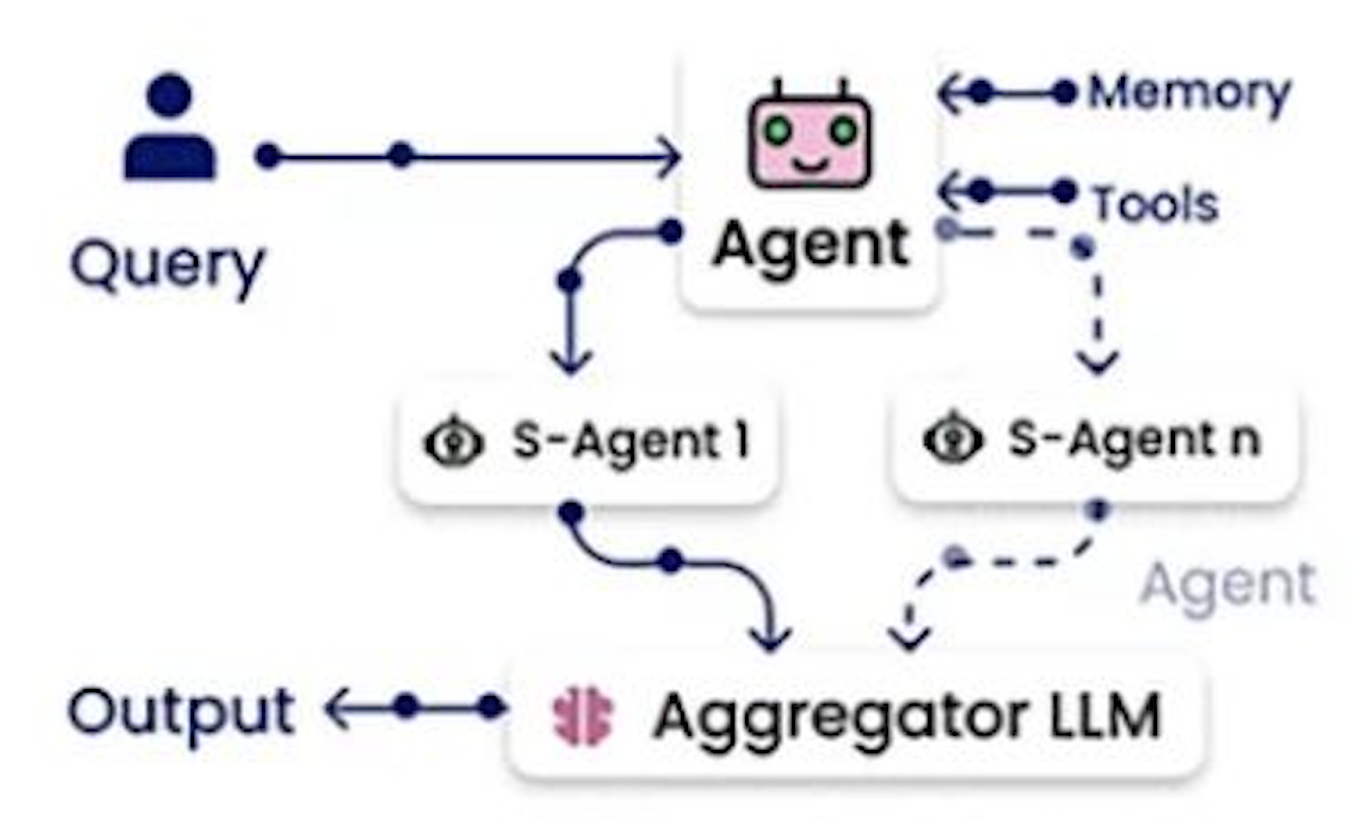
MIA supports multi-agent workflows by enabling the creation of systems where multiple agents collaborate. For example, one agent might handle data gathering, another might process that data, and a third might generate insights or recommendations based on the data. These agents can work seamlessly together to complete complex tasks, such as data analytics or multi-step business processes, increasing both accuracy and efficiency.
Benefits:
The collaboration between agents increases the overall efficiency and precision of the system. It’s ideal for situations where tasks can be broken down into smaller sub-tasks that require different expertise or processing capabilities. This pattern allows for scalability and robustness in AI systems
6. Agentic RAG (Retrieval-Augmented Generation):

The Agentic RAG design pattern combines the power of retrieval systems with the generative capabilities of AI agents. The agent retrieves relevant data from external sources (e.g., databases, search engines) and then processes this data to generate context-aware, well-reasoned output.
How it works:
An agent using the RAG pattern will first access relevant information from external sources based on the context of the task. This could be through a retrieval system like a knowledge base or a web search. Then, the agent synthesizes the information to generate responses, suggestions, or conclusions. The use of memory and tools enables this pattern to provide more accurate and specific results.
Use cases:
This pattern is ideal for systems like Perplexity, where agents need to access external knowledge and provide reasoned output based on that information. It’s commonly used in content generation, question-answering systems, and other domains where context and external data are crucial.
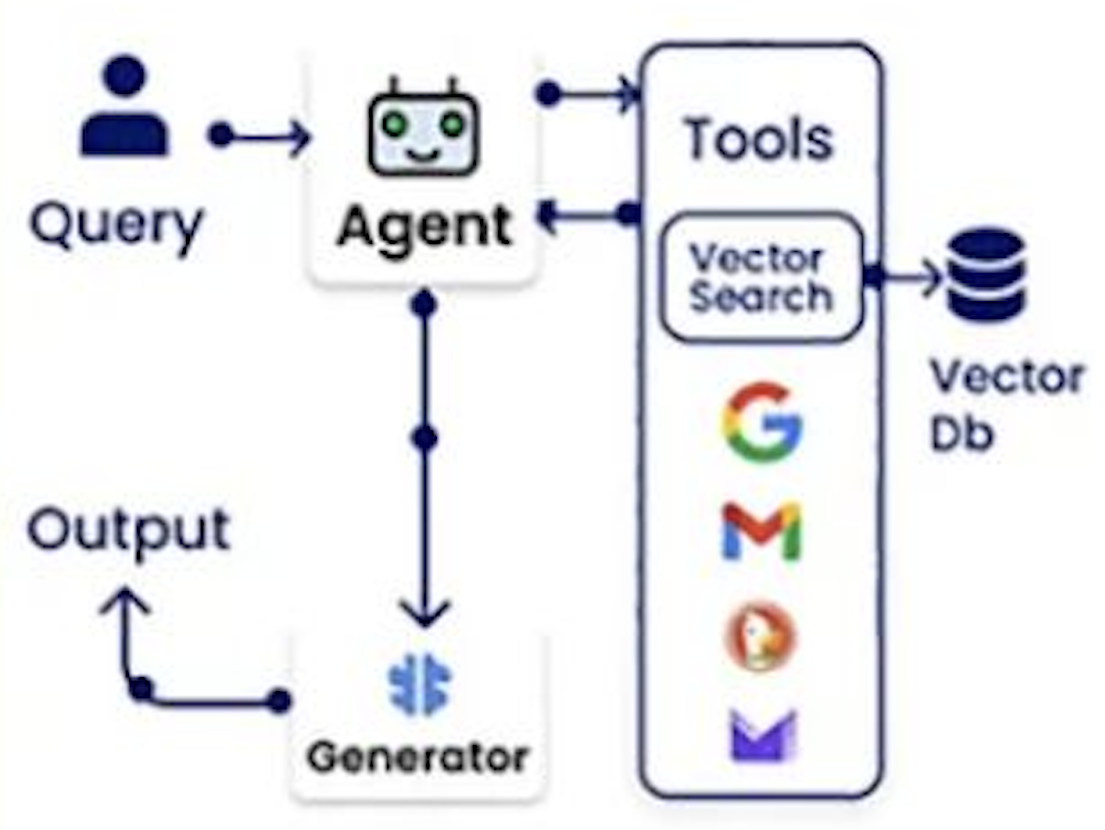
MIA enables agents to retrieve relevant information from various databases or external sources and then use that information to generate intelligent, context-aware responses. For example, when an agent is asked for a recommendation, it might first pull up relevant information from a knowledge base, then generate a well-informed response using the retrieved data. This pattern enhances the ability of MIA agents to provide more accurate, relevant, and timely outputs by integrating real-time data with AI-driven reasoning.
Benefits:
RAG enables the agent to provide outputs that are more accurate and contextually relevant. It combines the best of retrieval (for access to up-to-date and vast information) and generation (for providing nuanced, intelligent responses). This pattern is particularly useful for applications that require complex, context-aware outputs based on external knowledge sources.
MIA and Softqube Expertise in Agentic AI Design
At Softqube Technologies, we have built MIA – My Intelligent Assistant, to help businesses design and implement these powerful Agentic AI patterns with ease. With MIA, you can develop agents that are capable of long-term memory retention, respond to events in real-time, collaborate with other agents, and even simulate environments for testing.
MIA provides a no-code platform that abstracts the technical complexity, allowing businesses to focus on creating meaningful AI agents that can solve real-world challenges. Whether it’s building customer service agents for CRM, automating workflows, or enhancing content generation, MIA makes it possible to design advanced AI agents without writing a single line of code.
Conclusion: A Future with Smarter, Scalable AI Systems
The development of Agentic AI systems is rapidly advancing, and adopting the right design patterns can significantly enhance the scalability and effectiveness of AI-driven solutions. With MIA, Softqube Technologies is at the forefront, enabling businesses to create autonomous, intelligent agents that evolve, learn, and adapt over time.
By leveraging design patterns like memory augmentation, event-driven triggers, ensemble agents, and simulation-based environments, businesses can develop smarter, faster, and more reliable Agentic AI systems.
Ready to build your own Agentic AI? Get started with MIA – My Intelligent Assistant today and unlock the power of autonomous systems for your business.
FAQs
Recent Blogs
-
AI Agent 04 Dec, 2025
SuperMIA.ai Marketplace – The Big Idea, The Vision, and The First 5 AI Agents
-
AI Agent 28 Nov, 2025
Transform Your HR Workflow and Automate Hiring End-to-End with MIA’s IntelliHire
-
AI Agent 26 Nov, 2025
Turn Your Ideas into Ready-to-Launch Social, Email, and SMS Campaigns with MIA
-
AI Agent 24 Nov, 2025
How AI Chatbots and Voice Bots Are Redefining SaaS Client Onboarding and Support
-
AI Agent 20 Nov, 2025
Simplify Your Hiring Process Effortlessly with MIA’s AI-Powered Recruitment
